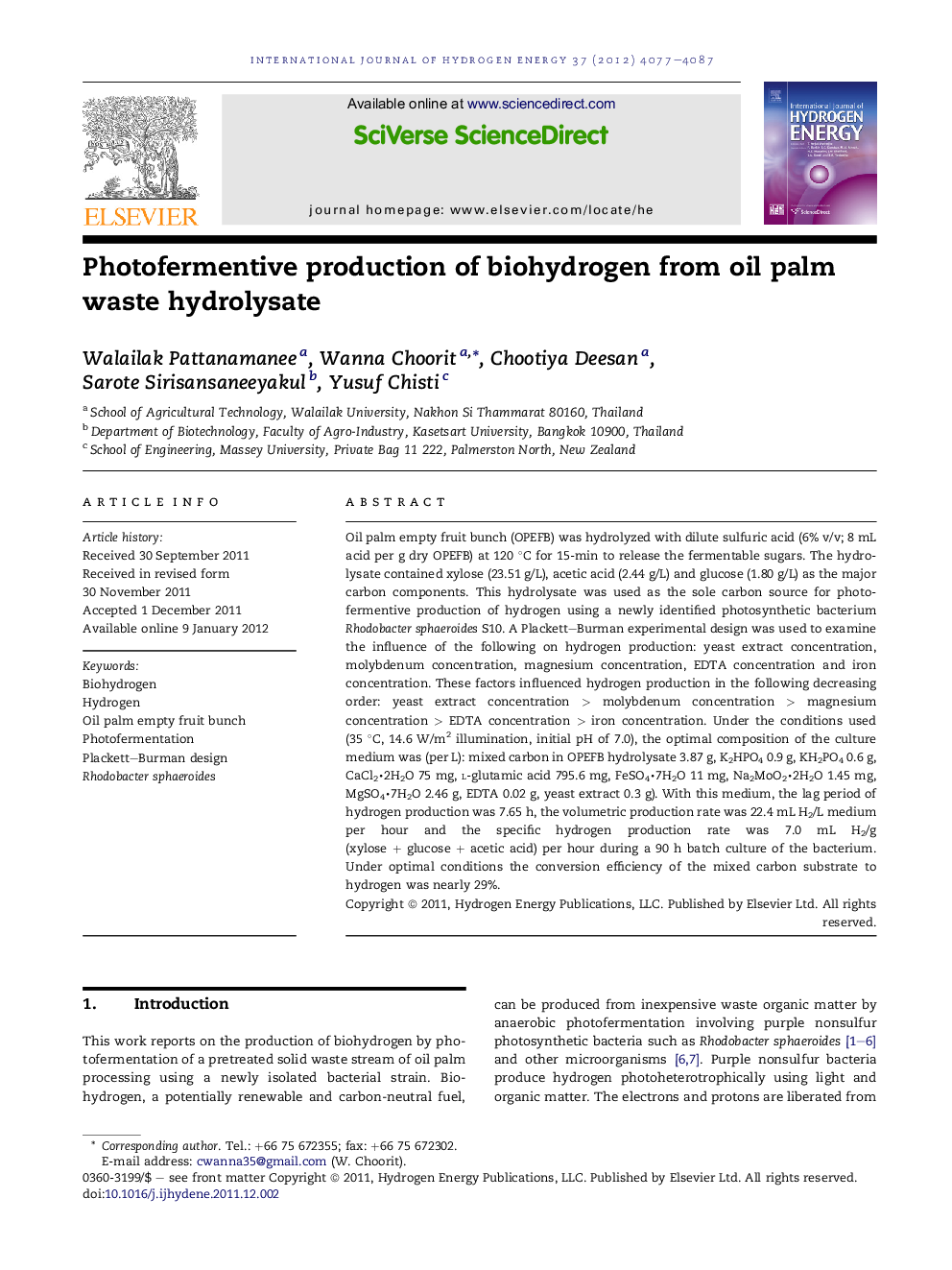| Article ID | Journal | Published Year | Pages | File Type |
|---|---|---|---|---|
| 1275461 | International Journal of Hydrogen Energy | 2012 | 11 Pages |
Oil palm empty fruit bunch (OPEFB) was hydrolyzed with dilute sulfuric acid (6% v/v; 8 mL acid per g dry OPEFB) at 120 °C for 15-min to release the fermentable sugars. The hydrolysate contained xylose (23.51 g/L), acetic acid (2.44 g/L) and glucose (1.80 g/L) as the major carbon components. This hydrolysate was used as the sole carbon source for photofermentive production of hydrogen using a newly identified photosynthetic bacterium Rhodobacter sphaeroides S10. A Plackett–Burman experimental design was used to examine the influence of the following on hydrogen production: yeast extract concentration, molybdenum concentration, magnesium concentration, EDTA concentration and iron concentration. These factors influenced hydrogen production in the following decreasing order: yeast extract concentration > molybdenum concentration > magnesium concentration > EDTA concentration > iron concentration. Under the conditions used (35 °C, 14.6 W/m2 illumination, initial pH of 7.0), the optimal composition of the culture medium was (per L): mixed carbon in OPEFB hydrolysate 3.87 g, K2HPO4 0.9 g, KH2PO4 0.6 g, CaCl2⋅2H2O 75 mg, l-glutamic acid 795.6 mg, FeSO4⋅7H2O 11 mg, Na2MoO2⋅2H2O 1.45 mg, MgSO4⋅7H2O 2.46 g, EDTA 0.02 g, yeast extract 0.3 g). With this medium, the lag period of hydrogen production was 7.65 h, the volumetric production rate was 22.4 mL H2/L medium per hour and the specific hydrogen production rate was 7.0 mL H2/g (xylose + glucose + acetic acid) per hour during a 90 h batch culture of the bacterium. Under optimal conditions the conversion efficiency of the mixed carbon substrate to hydrogen was nearly 29%.
► Biohydrogen is produced using a new local isolate of Rhodobacter sphaeroides. ► A pretreated oil palm process waste stream is used as the sole carbon source. ► Optimal conditions are identified for the photofermentation. ► Total hydrogen production exceeds 2 L per liter of broth in a batch fermentation.
